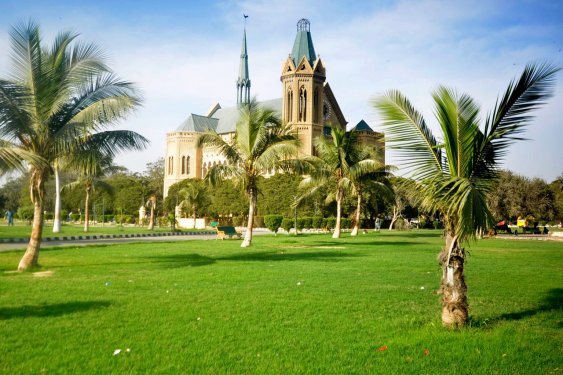Parks & the Pandemic

By Uswah e Fatima

Image credit: Dawn news
During the past year, city administrations in Pakistan have shut down parksseveral times due to COVID-19 pandemic. This policy stands in stark contrast with developed countries across the globe. These countries allowed the use of parks for small gatherings. In fact, parks were deemed as a safe public space, allowing people respite from social isolation. As a result, there was a surge in park visitation after the initial lockdown was eased.
It is easier to institute social distancing measures in parks given the expansive space and the abundant airflow. Parks allow people to socialize while observing SOPs and seek out nature rather than being cocooned in their houses, considering work from home policies adopted by majority of workplaces. Further, greener spaces help with anxiety and depression, problems that have become amplified during the pandemic. Thus, it is not surprising that parks have become a popular public space for socially distant hangouts, picnics, exercise, and even meetings. This has increased the value of urban parks across the world, except in Pakistan.
While cheap and easily accessible recreational activities have always been scarce in Pakistan, the pandemic has completely upended the possibility for most. A close look at Karachi reveals how the city has little to offer to those who cannot pay for recreation during the pandemic. Public parks and beaches offer the cheapest recreational activity. Yet, over the last year, access to them has been heavily restricted for the public owing to social distancing concerns.
The Pakistani government’s recent decision to shut down parks over the Eid ul Fitr holidays due to the surge in COVID-19 cases was lauded by most. However, an unintended consequence of this decision was discriminatory law enforcement practices. For instance, people traveling in private cars were seldom questioned about their whereabouts on Eid by the police. On the other hand, the police specifically scrutinized and harassed commuters on motorbikes and cycles andblocked off their access to the beach and other parks on the Clifton belt.
Large investments have been made towards beautification of public parks such as Bagh-ibn-e-Qasim in Clifton. These investments should have focused towards developing urban parks as community-centric spaces which are accessible to everyone. Beautification is not a subpar objective, but it should be complemented with utility. Parks can help boost local economic activity, increase property values, act as natural drains to prevent urban flooding, and offer a multi-cultural space to engage the local community.Our government needs revise its approach towards parks and recreation.
Apart from investing in parks on the Clifton belt, barren tracts of land can be transformed into small parks.These can be developed through community participation which will allow citizens to take ownership of their development and maintenance. These parks can be developed in each neighborhood to provide a safe recreational space for residents during the pandemic.
The government must use this pandemic as an opportunity to reimagine parks and enhance their utility for the public. The development of such public spaces is crucial to maintain a semblance of normalcy during the pandemic for most people. The utility of this action would certainly outlast the pandemic and contribute towards creating a more inclusive society.
——————————–
Uswah Fatima is a senior at the Lahore University of Management Sciences, pursuing a major in Sociology and Anthropology. Her current research domain focuses on the gendered impact of Covid-19 on frontline health workers.



